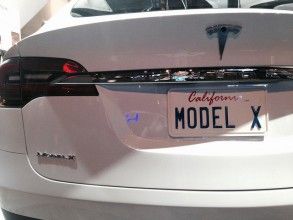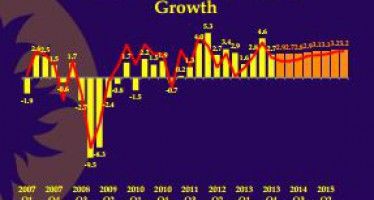Taxpayer-subsidized companies raking in public contracts
Los Angeles County is hitting 1.000.
The county has done business with each of the top 10 recipients of local and state subsidies in California, records show.
The practice is common, although hardly in violation of any rules. But across the state, groups that have received breaks are getting deals to do business, with taxpayers effectively signing two sets of checks to some of the largest, well-capitalized companies in the world.
Oracle received a contract in 2011 for project management software to monitor L.A. County’s $40 million transit and highway expansion project. Oracle has also received $7.5 million in tax breaks and subsidies in the state since 1996.
In the city of San Diego, subsidized vendors included Time Warner, which had a cable internet contract in 2014, as well as software maker Oracle and defense behemoth Northrop Grumman Systems, which had contracts in 2012.
Northrop Grumman has cleaned up there; the $593,388 in city contracts over the past three years came as the company has received $429 million in subsidies statewide.
CalWatchdog compared local government vendor data to the numbers gathered by the subsidy watchdog group Good Jobs First. By the group’s tally, state and local subsidies in California topped $2 billion in recent years, with information focused on the period since 2012 plus some awards back to the mid-‘90s.
The state subsidies list is dominated by heavyweights: Walt Disney, Comcast, Anschutz Company, Viacom, Time Warner, Virgin, Lockheed Martin, Samsung, Northrop Grumman and Oracle.
Most of the top 10 can be found among the Fortune 500, a ranking based on revenues. California taxpayers helped get them there, through breaks, allowances, training allotments and delays on taxation. (Voice of San Diego did a good assessment of California’s many subsidy programs last fall.)
In exchange, the body giving the break, be it the state or a municipality, hopes for employment and tax revenue that will put it ahead of the game. Job creation mandates are sometimes part of the deal — that is, upon the creation of a number of jobs, the subsidy is given. Major corporations have teams that work full-time on such equations.
California ranks lower than most with regard to size and scope on a statewide basis.
“Although California has often been on the losing end of interstate job piracy, the state generally does not offer major state subsidy packages to individual companies,” according to a report by Good Jobs First. “And contrary to the norm, it has only a few programs of any significance.”
Often found near the bottom of rankings for business climate, the state has had a mixed experience with subsidies.
Subsidy programs in Tennessee and Texas were used to woo Nissan and Toyota, once a major part of the state’s proud auto company portfolio, away from California. Those were the highest-profile moves among a number of corporate headquarters defections from California in the past 10 years.
The state recently passed legislation to give $330 million worth of inducements to get the entertainment industry back, after losing business to the growing number of states with film incentive programs.
Even by handing over government contracts to the already-subsidized companies, incentives are a gamble.
The state’s glaring example of unintended consequences has been with Tesla, which in 2010 received a package of incentives worth $20 million when the company took over part of the empty NUMMI auto manufacturing plant in Fremont.
An article at the time by the San Francisco Business Times noted, “Gov. Arnold Schwarzenegger said the deal for NUMMI was made possible by tax incentives and credited Treasurer Bill Lockyer for finding available incentives.”
The party was disrupted in May, when it was revealed that Tesla was benefitting from $4.9 billion in government subsidies across the U.S., including those from California. It is considered by many an outsized allotment for an industry – electric vehicles – that has no solid base at this point.
At the same time, there have been winners.
The California Valley Solar Ranch developed by NRG Energy was granted a property tax break by San Luis Obispo County worth $14 million, and is now performing above expectations, generating up to 4 percent more than the 600,000 kilowatt hours a year that were projected.
Steve Miller can be reached at 517-775-9952 and [email protected]. His website is www.Avalanche50.com
Related Articles
Obamacare: This is going to hurt
Ouch! That’s the cry of someone trying to sign up for the Affordable Care Act, usually called Obamacare. Health insurance
Cal Lutheran: State growth anemic next 2 years
California’s economic recovery remains anemic and a two-year projection put forth in the March forecast of the Center for Economic
CPUC slaps Uber with big fine
To play in California, Uber must pay. “The California Public Utilities Commission agreed last Thursday with a judge’s recommendation to




